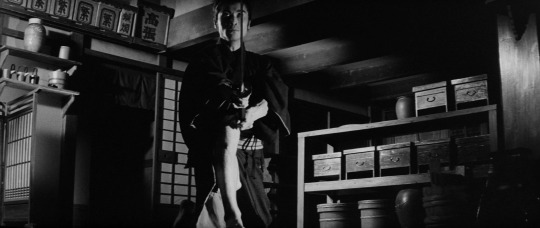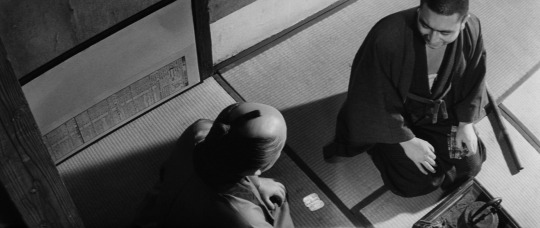#tales of zatoichi
Explore tagged Tumblr posts
Text




Zatoichi showing a bunch of yakuza the error of their ways in The New Tale of Zatoichi (1963).
This is the third film in the 26-film series, and the first filmed in color.
#The New Tale of Zatoichi#Zatoichi#Shintaro Katsu#anma#yakuza#blind swordsman#chambara#jidaigeki#Daiei Film
25 notes
·
View notes
Text
Now watching:

13 notes
·
View notes
Text
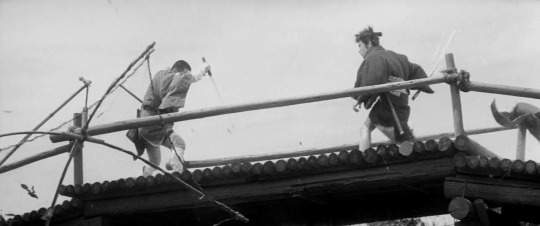

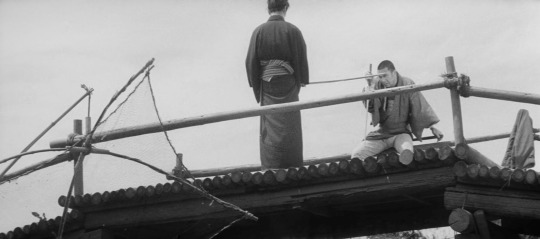
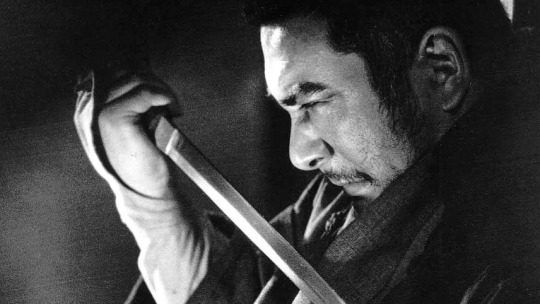


is poetry in sorrow all there is to ease our suffering? can we cherish the tragic without succumbing to it?
3 notes
·
View notes
Text




New Tale of Zatoichi, Tokuzō Tanaka, 1963.
0 notes
Text
New Tale of Zatoichi on Letterboxd
0 notes
Text
Novo Conto de Zatoichi (1963), dir. Tokuzô Tanaka.

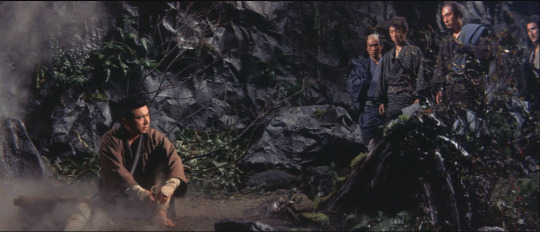


Review originalmente postada: 20/Fev/2023 no Letterboxd.
Neste terceiro longa da franquia, o primeiro filme em cores da franquia, volta com um ritmo parecido com o primeiro filme, dando mais tempo de tela para explorar o drama da vida do protagonista e menos ação, ao contrário do que vimos no segundo. Aqui vamos ver o anseio por uma vida normal por Zatoichi, cansado da violência, inveja uma vida de trabalho humilde, com uma esposa em casa. Nada de uma vida de Yakuza, jogatina ou luta de espadas. Isso foi sondado nos primeiros filmes, mas aqui, o filme todo se envolve neste drama. A questão da moralidade do Zatoichi é posto para pauta. Por isso, somos apresentados a mais personagens do passado do Zatoichi, quando o mesmo decidiu que precisava treinar para sua sobrevivência. Seu sensei, se mostra alguém não confiável. Seu inimigo, se mostra honrado. Diversas dúvidas para o mesmo. Não sei se a mudança para um filme colorido, as cenas de ação ficaram menos interessantes na exploração da cegueira do Zatoichi. Sem dúvidas, dos três primeiros, é o filme com as cenas de ação mais fracas. No entanto, isso não tira o mérito do filme, as melhores cenas são a exploração da perdição da vida do Zatoichi, o seu drama parece nunca acabar, sempre perdendo um amor ou um amigo. Aqui vemos o mais perto de desistir de tudo por esse personagem.
#新・座頭市物語#new tale of zatoichi#1960s#tokuzo tanaka#japanese movies#japanese cinema#samurai cinema#movies#japan movies#movie#cinema#japan cinema
0 notes
Text
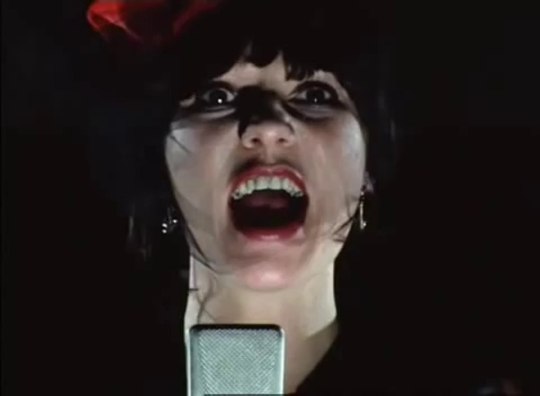
Spectacle Radio ep.100 :: 05.11.23 :: It's horrible, I love it, what is it?
Slava Tsukerman - Liquid Sky (1982) Main Titles from Quartier Mozart (Jean-Pierre Bekolo, 1992) Tokyo Kid Brothers - I kind of hate my father (Throw Away Your Books, Rally in the Streets // Shuji Terayama, 1971) De Kalafe e a Turma - Guerra (Awakening of the Beast // Joes Moijica Marins, 1970) Stelvio Cipriani - Week-end with Mary (Femina Ridens // Piero Schivazappa, 1969) Nicola Piovani - Main Titles from Footprints on the Moon (Luigi Bazzoni, 1975) - Michael Nyman - Squaline Fallaize (The Falls // Peter Greenaway, 1980) Zdeněk Liška - The Deadly Invention (Karel Zeman, 1958) Andrzej Korsynski - Main Titles from The Devil (Andrzej Zulawski, 1972) Vangelis - Entends Tu Les Chiens Aboyer (Do You Hear the Dogs Barking? // François Reichenbach, 1975)
Stelvio Cipriani - La Polizia Chiede Aiuto #4 (Massimo Dallamano, 1974) Rheingold - FanFanFanatisch (Der Fan // Eckhart Schmidt, 1982) Þeyr - Rúdólf (Rokk Í Reykjavík, 1982) Jean-Michel Jarre - Zoolook (Remix) (Magic of the Universe // Tata Esteban, 1986) Westernhagen - Celebration (Supermarkt // Roland Klick, 1974) J.A. Seazer - Buddha Child (Pastoral: To Die in the Country // Shuji Terayama, 1974) Toru Takemitsu - End Titles from The Ruined Map (Hiroshi Teshigahara, 1968)
Michael Nyman - Castral Fallvernon (The Falls // Peter Greenaway, 1980) - Phil Oakley & Giorgio Moroder // Together In Electric Dreams (from Electric Dreams, 1984) Rheingold // Fan Fan Fantatisch (from Der Fan, 1982) Hiroyuki Onogawa // from August In the Water (1995) Chuck Cirino // from Chopping Mall (1986) Yuji Koseki // from Mothra (1961) Shintaro Katsu // Otento-san (theme from Tale of Zatoichi, 1962) music from Out 1 (1971) Hussein al-Iman // music from Anyab (1981) Anna Karina // Roller Girl (from Anna, 1967) Fabio Frizzi & Cricket // You Are Not the Same (from Contraband, 1980) Stardust Brothers // Crazy Game (from Legend of the Stardust Brothers, 1985) BED: theme from 300 (2006) slowed down x3 -
Simon Boswell - It’s Horrible, I Love it, What Is It? (Hardware, 1990) Method Man - Release Yo Self (Prodigy remix) (One Eight Seven, 1997) Shriekback - The Big Hush (Manhunter, 1986) Tangerine Dream - Teetering Scales (Miracle Mile, 1988) Sue Saad - Looker (Looker, 1981) Sheryl Lee Ralph feat. Cedella Marley & Sharon Marley Prendergast - The Mighty Quinn (The Mighty Quinn, 1989)
4 notes
·
View notes
Text
Recently Viewed: Kenji Misumi’s Yotsuya Kaidan (1959)
[The following review contains MAJOR SPOILERS; YOU HAVE BEEN WARNED!]
Yotsuya Kaidan is Japan’s most popular and frequently adapted ghost story. While the core premise is basically consistent from version to version—penniless ronin Tamiya Iemon falsely accuses his wife of adultery as a pretext to divorce her and marry a wealthier woman, culminating in violence, regret, and vengeance from beyond the grave—the precise details of the narrative vary wildly between cinematic interpretations.

Shintoho’s 1959 film (helmed by Jigoku director Nobuo Nakagawa), for example, is a relentlessly dark (albeit vibrantly colorful) and bleakly cynical morality play; the protagonist is casually cruel and unrepentantly vile, with his grisly fate framed as karmic justice that the audience is intended to enthusiastically applaud. Keisuke Kinoshita’s 1949 duology, on the other hand, depicts Tamiya far more sympathetically; despite his (thoroughly reluctant) complicity in the terrible crimes committed against his spouse, he’s motivated primarily by economic factors beyond his control and the corruptive influence of his slimy, manipulative, verminous “friend,” Naosuke. Indeed, it is implied that the “haunting” is merely psychological—a subconscious manifestation of the central character’s guilty conscience. (Ironically, this “social realism” makes Kinoshita’s movie feel more subversive and revolutionary than Nakagawa’s comparatively lurid and gory effort.)
Kenji Misumi’s radically revisionist spin on the classic tale, however, probably takes the most liberties with the surprisingly malleable source material. Here, Tamiya (played by megastar Kazuo Hasegawa—which goes a long way towards explaining the particular “quirks” in his portrayal) is borderline heroic—an archetypal gruff-yet-chivalrous swordsman cut from the same cloth as Zatoichi and Tange Sazen. He’s also so passive and devoid of agency that he resembles the eponymous “specter” in Hammer’s The Phantom of the Opera, remaining virtually blameless for the (unnecessarily convoluted) series of events that result in his tragic downfall. He’s totally unaware of Naosuke’s devious conspiracy to humiliate, defame, and ultimately murder his wife, and although he still participates in an extramarital affair, the relationship appears to be purely transactional (and may not be overtly sexual; the extent of the “lovers’” physical intimacy is left deliberately ambiguous)—driven to desperation by poverty, he only indulges his mistress’ affections in exchange for money and lavish gifts. The editing, in fact, at one point explicitly juxtaposes his infidelity with that of his sister-in-law, who works part-time as a “waitress” at a “bathhouse” in order to supplement her husband’s meager income. Naturally, Tamiya’s relative “innocence” completely recontextualizes the story’s climax and denouement; whereas the character usually suffers an appropriately shameful, pathetic, undignified demise, Misumi allows him to achieve a measure of redemption via his glorious, honorable, beautiful death—sprawled at the feet of a bronze Buddha statue, wrapped in his wife’s favorite kimono, bathed in heavenly sunlight.

Pulpy, unsubtle, and unapologetically melodramatic even by Daiei’s standards, Yotsuya Kaidan isn’t the “best” adaptation of the original kabuki production, but Misumi’s various audacious departures from the “traditional” formula certainly distinguish it as one of the most interesting, unique, and undeniably compelling. For fans of chanbara and J-horror alike, it is essential viewing.
#Yotsuya Kaidan#Yotsuya Kwaidan#Ghost Story of Yotsuya#Kenji Misumi#Kazuo Hasegawa#Daiei#Japanese film#Japanese cinema#Japanese horror#J-horror#J horror#chanbara#Film Forum#chambara#film#writing#movie review
0 notes
Photo

I'm watching The Tale of Zatoichi (1962)
0 notes
Text

Zatoichi has drawn his sword, which means that someone - probably multiple someones - is about to have a very bad day in The New Tale of Zatoichi (1963).
#The New Tale of Zatoichi#Zatoichi#Shintaro Katsu#anma#yakuza#blind swordsman#chambara#jidaigeki#Daiei Film
16 notes
·
View notes
Text
Takeshi Kitano returns to Cannes, 'indifferent' to success
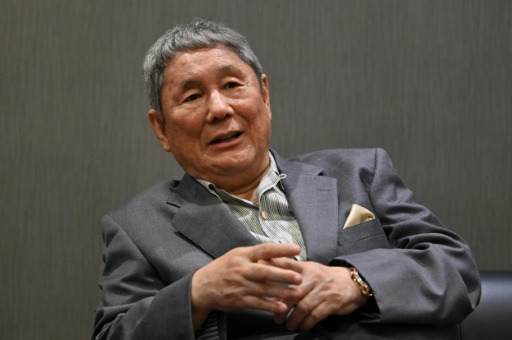
TOKYO
Takeshi Kitano makes his comeback at Cannes next week with a new samurai epic, but the cult Japanese filmmaker told AFP that he strives to remain "indifferent" to success.
Kitano, who rose to fame as a comedian before winning acclaim as an arthouse director, said in an exclusive interview that he does things his own way.
"If I receive recognition abroad, I'm happy, but I want to be as indifferent to that as possible," he said in Tokyo before departing for the French film festival. "I'd be very happy if something I'd shot... received good reviews. But that doesn't mean I will try to please."
"Kubi" is the first feature-length release in six years from the 76-year-old, whose eclectic career has included spells as an actor, author, painter and host of the gameshow "Takeshi's Castle".
Although his latest period piece has a bigger budget than the gritty gangster flicks he became known for, originality remains crucial for Kitano.
Despite being a huge fan of Japanese cinematic master Akira Kurosawa, when making "Kubi", he avoided watching the combat scenes in the director's 20th-century classics like "Seven Samurai" or "Ran".
"I hate being influenced," Kitano said. "I tried not to watch the battle scenes in Kurosawa's films, so I wouldn't be influenced by them. If they are similar, we probably had the same ideas."
"Kubi" tells the tale of the 1582 death of Japan's most powerful feudal lord in a deadly trap at a temple in Kyoto, in what became known as the Honno-ji Incident.
The film is not in competition at Cannes, but will premiere at the festival on Tuesday.

It is Kitano's first Cannes appearance since 2010, when the yakuza movie "Outrage" went before the Palme d'Or jury.
But lounging on a sofa in his dressing room at Japanese network TV Asahi, having just recorded the political show he has presented for decades, the director played down his return to the big screen.
"I've been trying to quit TV and movies for a long time," he said, adding he was trying to take it easy, playing golf at his holiday home.
But even without the pressure to produce more work, Kitano found himself back on set. "I thought I would make this film my last one," he said.
"But then, after we finished filming, the actors and crew said it was a good movie," he said, describing their appreciation as "the most important thing".
Having studied engineering and "space-related subjects" at university, entertainment was Kitano's second choice of career -- something that allows him to feel "relaxed" even now.
For decades he was one of Japan's most popular TV presenters, known as "Beat Takeshi", performing sketches dressed as anything from a sumo wrestler to a giant milk carton.
In contrast, his movies are full of tortured characters and dark humor, such as the underworld thrillers "Sonatine", "Brother" and "Hanabi", which took top prize at the 1997 Venice Film Festival.
Kitano's biggest commercial success, 2003's "Zatoichi", was also a samurai film, and "Kubi" is his most expensive film yet, having cost 1.5 billion yen to make.
"Most Japanese films are small-scale productions with small budgets... I thought I'd try to do something on a larger scale," Kitano said.
In fact, he had wanted a budget and crew "three times bigger", he said, and computer graphics were used to upscale the battle scenes.
Kitano first wrote a synopsis for "Kubi" three decades ago, but the project only took off after he wrote a novel in 2019 about the key moment in Japan's history.
It contains the themes of loyalty, betrayal and Japanese codes of honor often seen in Kitano films, and also includes close same-sex bonds.
"Japanese historical drama rarely depicts male homosexuality," although "it was common in that era", Kitano said.
So "I wanted to make a film that would never be done on TV" or in mainstream Japanese cinema.
The final product is more somber, intimate -- and violent -- than the usual sugar-coated primetime samurai dramas.
And even with two future film projects potentially on the cards, Kitano says what people think will remain a low priority.
"I'm just doing what I like and what I think is good."
0 notes
Text
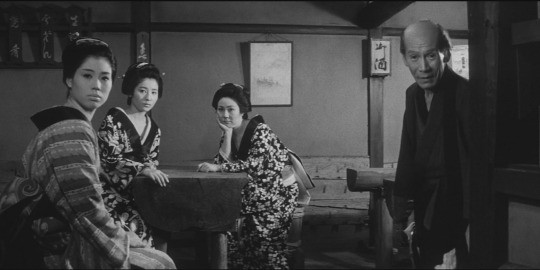

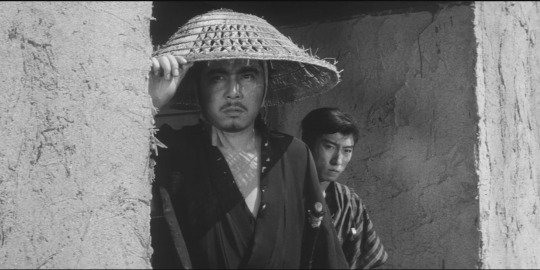
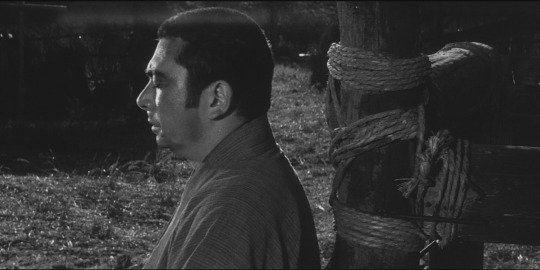
The Tale of Zatoichi Continues, Kazuo Mori, 1962.
1 note
·
View note
Text
The Tale of Zatoichi Continues on Letterboxd
0 notes
Text
O Conto de Zatoichi Continua (1962), dir. Kazuo Mori.




Review originalmente postada: 03/Fev/2023 no Letterboxd.
Uma continuação sólida, que foca em finalizar pendências do primeiro filme e aumentar o background do Zatoichi.
O filme é mais compacto, com foco quase todo em ação. O ritmo acelerado acabou derrapando o desenvolvimento, acabando que revelação do último ato não atingiu a dramatização necessária.
O foco em ação, vemos ainda mais os feitos das habilidades do Zatoichi, nesta parte, a direção é perfeita. O seu estilo de luta cria cenas únicas.
#The Tale of Zatoichi Continues#Zatoichi#chambara#jidaigeki#ronin#yakuza#Shintaro Katsu#japan movies#movies#movie#cinema#japan cinema#japanese cinema#Kazuo Mori
0 notes
Text
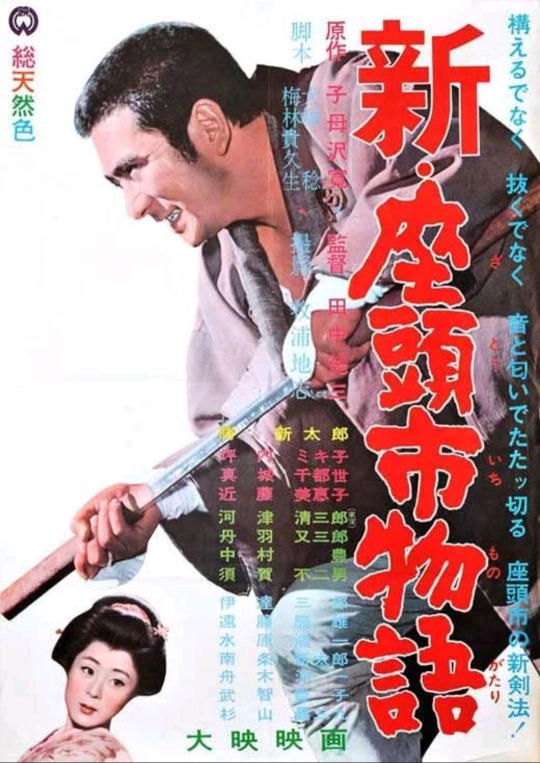
Shin Zatôichi Monogatari
(Novo Conto de Zatoichi)
JP, 1963
Tokuzô Tanaka
6/10
.
Zatôichi Colorido
Pela primeira vez filmado a cores, sem a bela cinematografia a preto e branco do primeiro filme , e com um amor Impossível no centro da trama, que assim ganha um inesperado toque romântico, aínda que fatalista, este novo conto de Zatoichi fica aquém do primeiro.
Compreendo a vontade de não repetir fórmulas mas o caminho seguido retirou carisma a este Zatôichi e aproximou-o da banalidade.
Não posso não deixar de referir que a cinematografia deixa um pouco a desejar, sobretudo se comparada com a do primeiro episódio.
O herói perdeu o carisma e desceu ao mercado do audiovisual.
.
Colored Zatôichi
Filmed in color for the first time, without the beautiful black and white cinematography of the first film, and with an Impossible love at the center of the plot, which thus gains an unexpected romantic, yet fatalistic touch, this new tale by Zatoichi falls short of the first.
I understand the desire not to repeat formulas, but the path followed removed this Zatôichi's charisma and brought him closer to banality.
I cannot fail to mention that the cinematography leaves a little to be desired, especially when compared to the first episode.
The hero lost his charisma and went down to the audiovisual market.
0 notes

